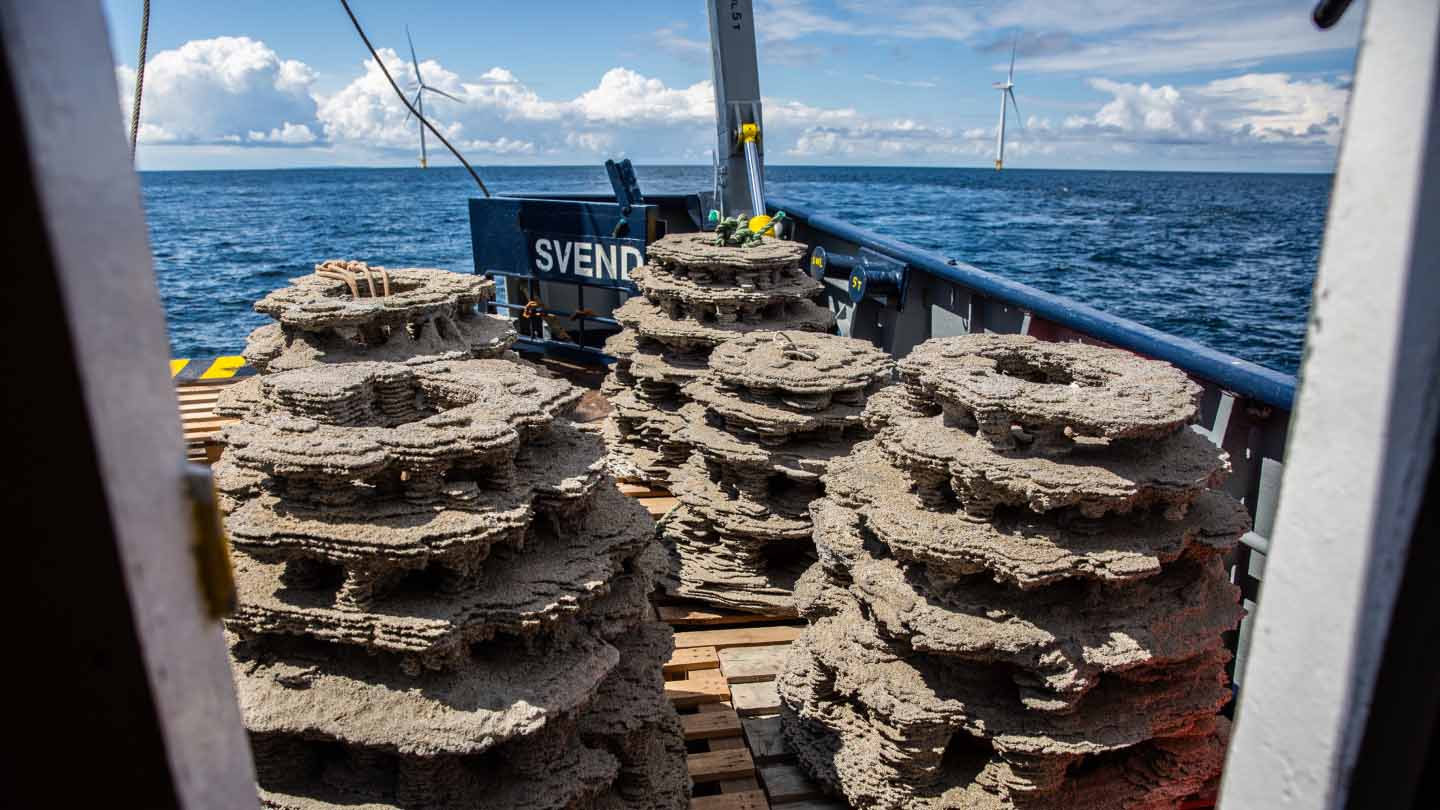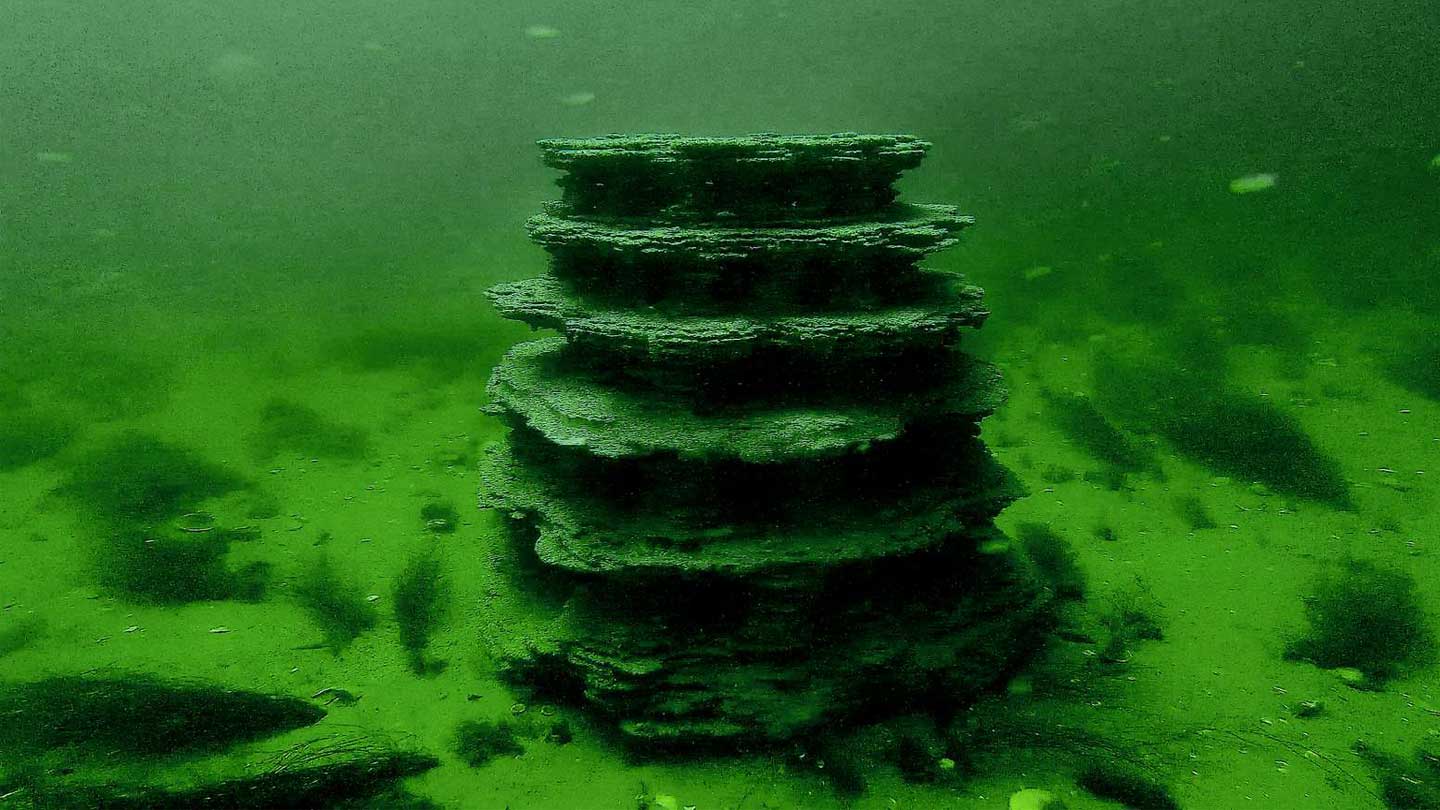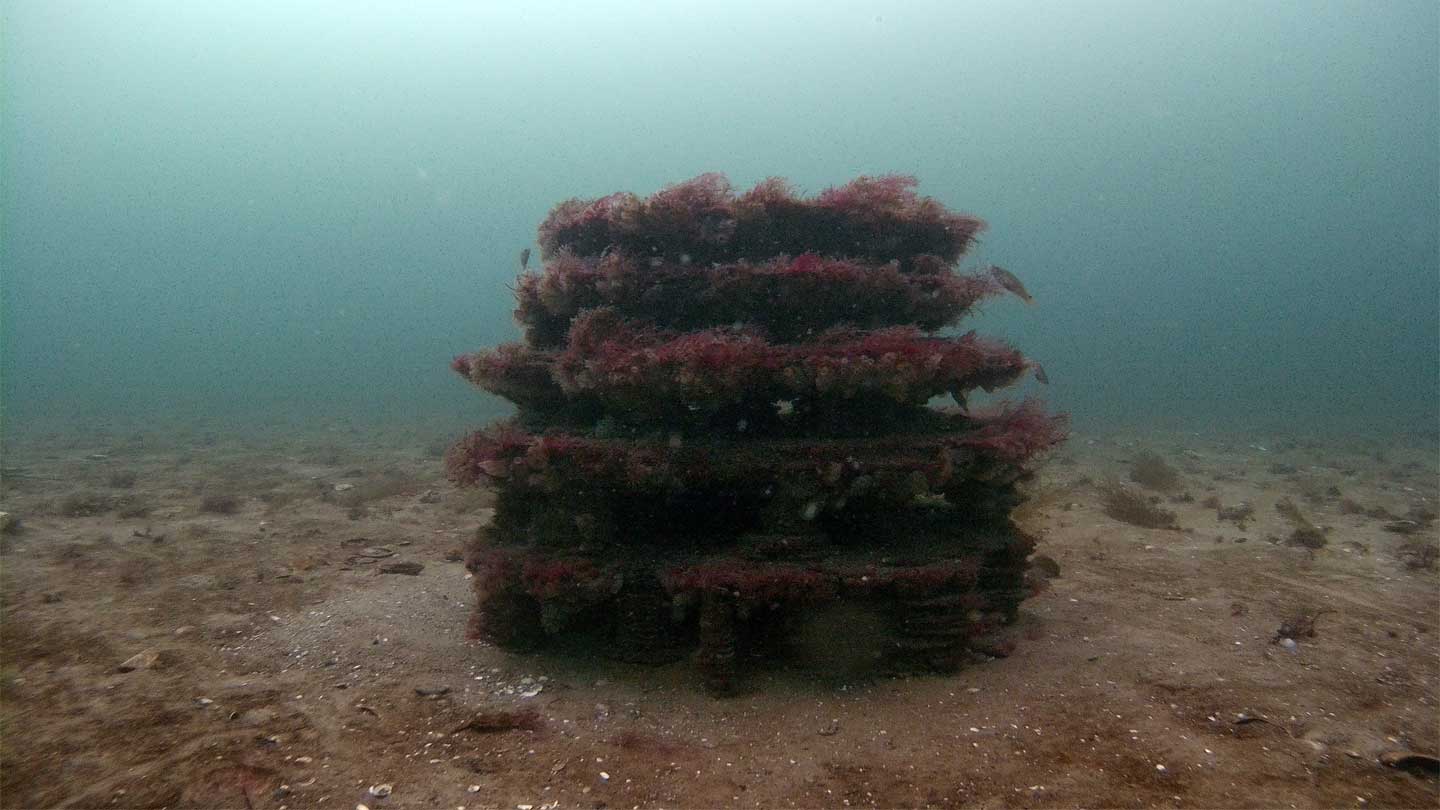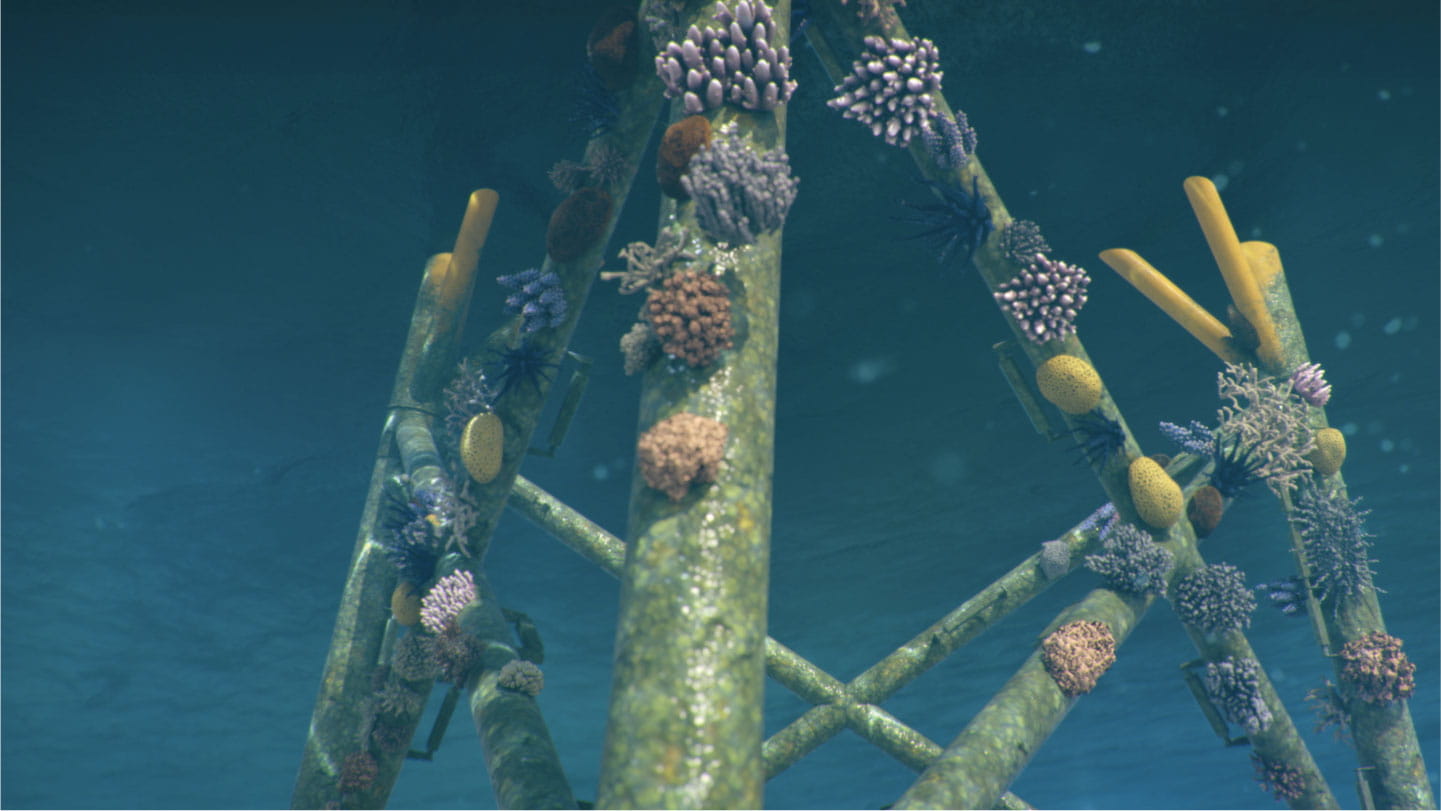In 2022, we deployed a dozen 3D-printed reef structures on the seabed between the wind turbines at our Anholt Offshore Wind Farm between Sweden and Denmark – a sea area called the Kattegat.

Our hope was that these man-made reefs would create habitats for cod to thrive. The Kattegat is experiencing a historically low cod population – threatening the health of the entire marine ecosystem.
Now, after two years, we’re looking at whether the 3D-printed reefs are meeting their scientific objectives. Read on to learn what we’ve found under the water.
Our aim: to increase habitats for cod
Years of overfishing, increasing oxygen depletion near the seabed, and habitat loss have all led to a decline of the cod stock in the Kattegat over the last 20 years.
The cod stock is now alarmingly low. As top predators, cod help maintain the marine ecosystem’s delicate balance by preying on other species, such as green crabs.
With fewer cod in the Kattegat, the green crab stock grows, disturbing the ecosystem and negatively impacting other species. The crabs eat the seeds of eelgrass and snails that keep the eelgrass free from overgrowing algae.
This creates a problem since eelgrass is itself of great importance to both biodiversity and the climate. It provides important habitats for marine life such as juvenile fish, it produces oxygen, and it stabilises the seabed.
Crucially, it also stores carbon in its root network, preventing it from ending up in the atmosphere and contributing to the global temperature rise.
3D-printed reefs offer innovative solution
The 3D-printed reefs we deployed on the Kattegat seabed should increase the number of habitats for cod, hopefully with a positive effect on the species stock to, in turn, contribute to a healthier marine ecosystem.
The biocompatible reefs made from natural materials, which are not harmful to the surrounding environment, have a wedding cake-like appearance that allow space for the fish to swim in and out of hiding spaces.
The structures also provide hard surfaces and crevices onto which other organisms can attach.
The reefs, which are about 1 cubic meter in size and weigh up to half a ton, vary in their exact shape to best imitate natural habitats.
How are the reefs doing two years in?
In July 2024, once the reefs had been in place for two years, we surveyed the reefs to see what had happened.
What we discovered was stunning growth and colours. A beautiful red algae coverage has been established on the hard substrate of the reefs. Close to the reefs we can see macro algae such as sugar kelp, and bivalves.
The reefs are hosting various marine organisms, including fish species such as goldsinny wrasse and marine invertebrates such as tunicates and starfish. We can also see crustaceans.
Plenty of barnacles have taken over, forming a new surface on the reef. Even larger crustaceans such as crabs can be spotted, hiding in the specifically designed cavities.
To sum up, we see that a new microhabitat has evolved since the reefs were deployed in 2022.
Goldsinny wrasse is one of the first colonisers of reefs and the most common fish that appears around reefs.
Small fish, molluscs, crustaceans, and invertebrates are prey for Atlantic Cod.
This is first confirmation that the man-made reefs can improve the resilience of the ecosystem in the Kattegat and elsewhere by creating a habitat for cod and other species.
Building blocks for positive change
This project builds on our growing partnership with WWF Denmark.
In 2022, in addition to installing the 3D-printed reefs, we teamed up to install biohuts at the piers in the port of Grenaa in collaboration with the Port of Grenaa and the Kattegat Centre.
Biohuts can be described as fish kindergartens. They provide a space for juvenile cod to seek shelter and food until they are large enough to swim out into deeper water.
Together, the two projects offer new coastal habitats for cod at key stages in its life cycle.
The 3D-printed reefs are also intended to complement existing boulder reefs that we established in connection with the construction of the Anholt Offshore Wind Farm in 2012.
The objective with the installation of these stone reefs was to create attractive oases for marine species on an otherwise barren seafloor. Now, a decade after the stone reefs were established, they are teeming with life.
Our Biodiversity ambition
Biodiversity’s situation is critical. As a global leader in green energy, it’s our responsibility to make a positive contribution to both climate and nature.
That’s why our ambition is that from 2030 at the latest, all new renewable energy projects we commission must have a net-positive biodiversity impact. This project around the Kattegat is one example of the solutions we’re exploring.




